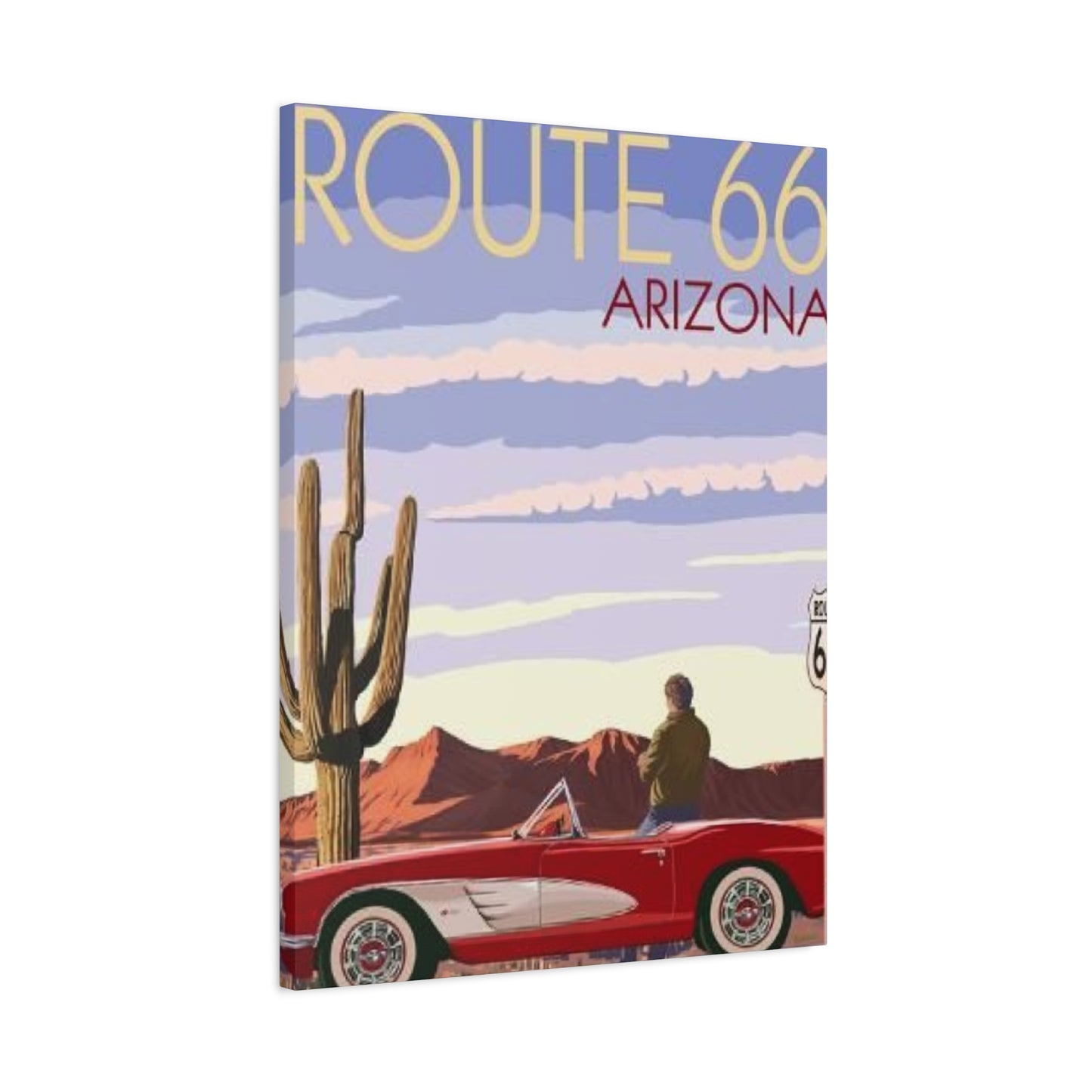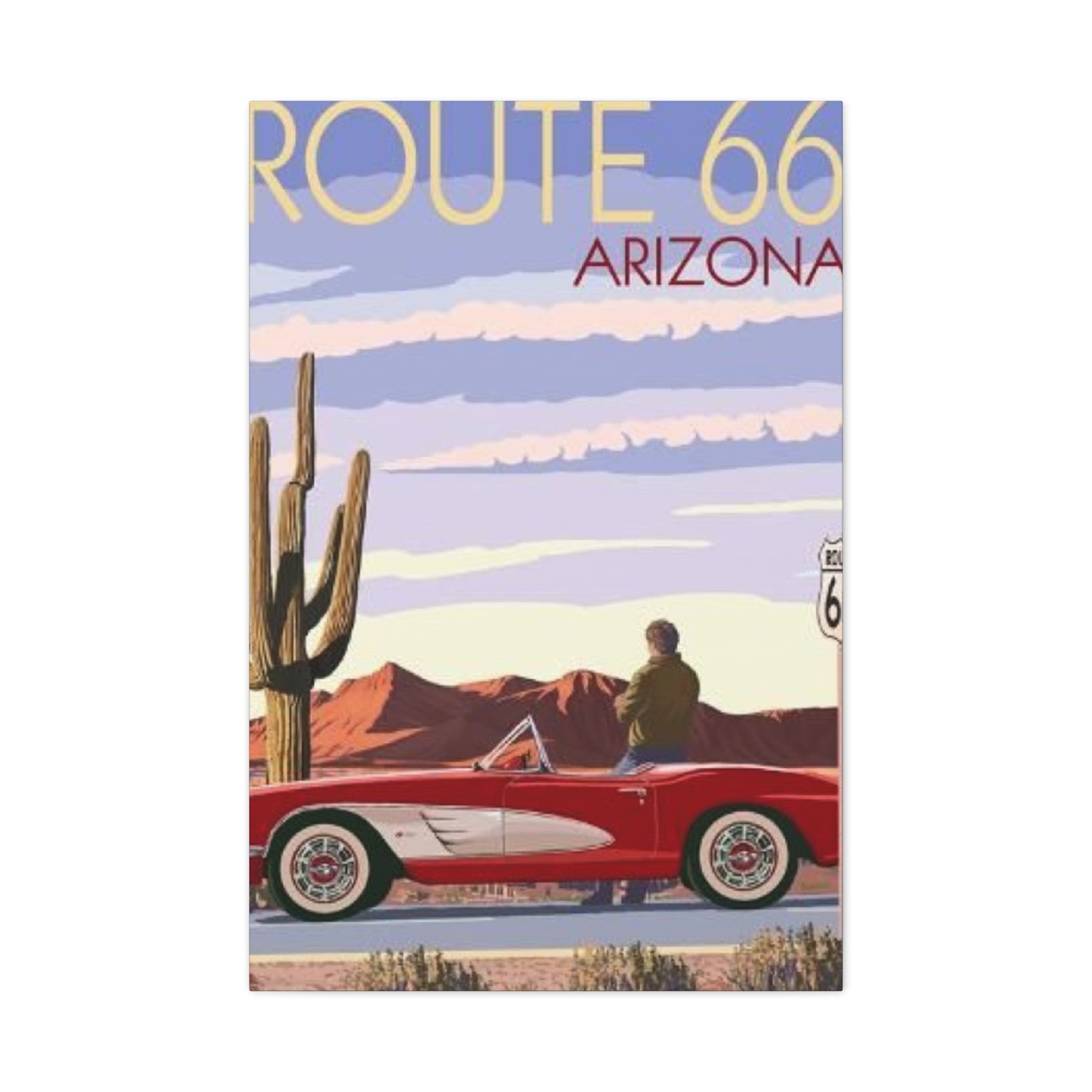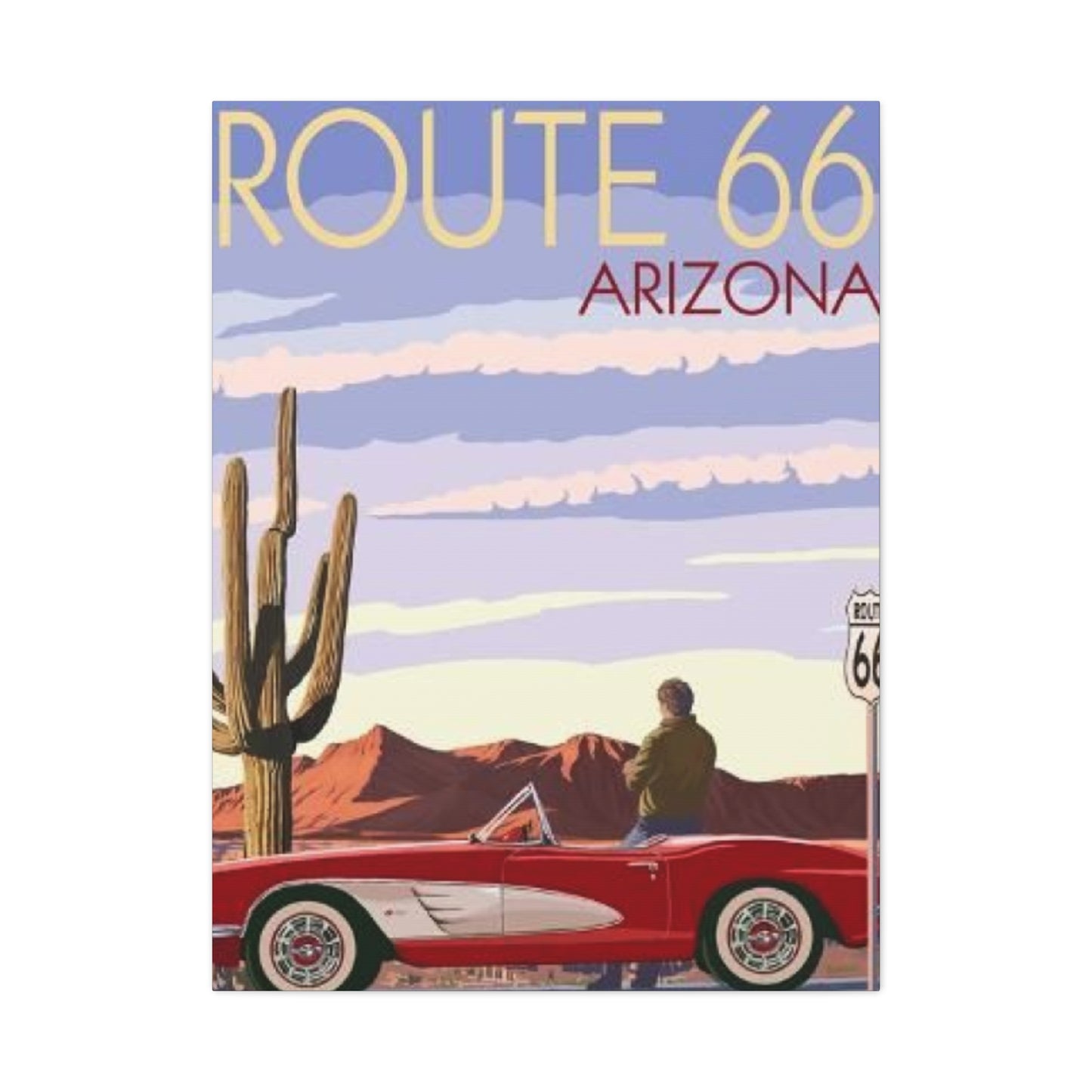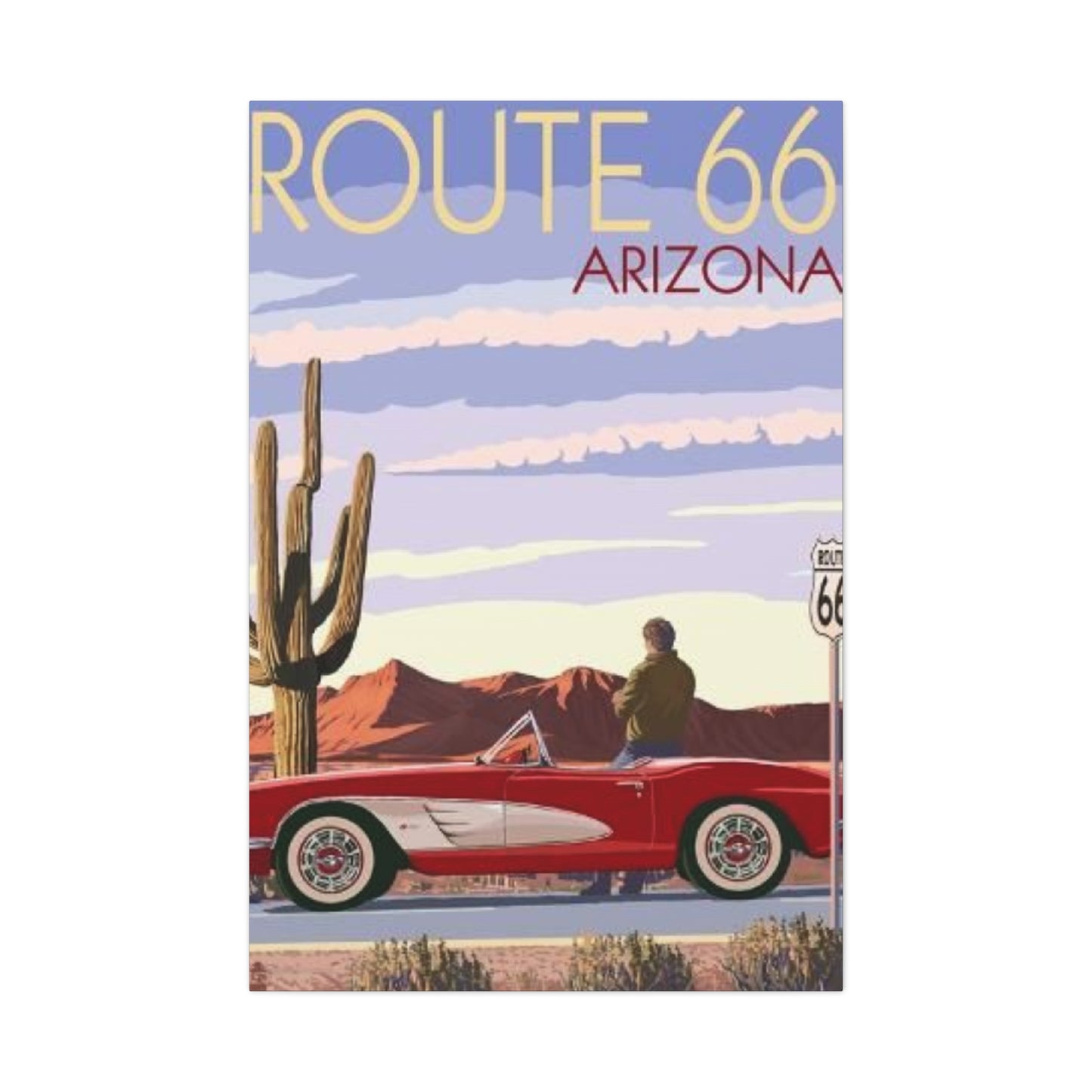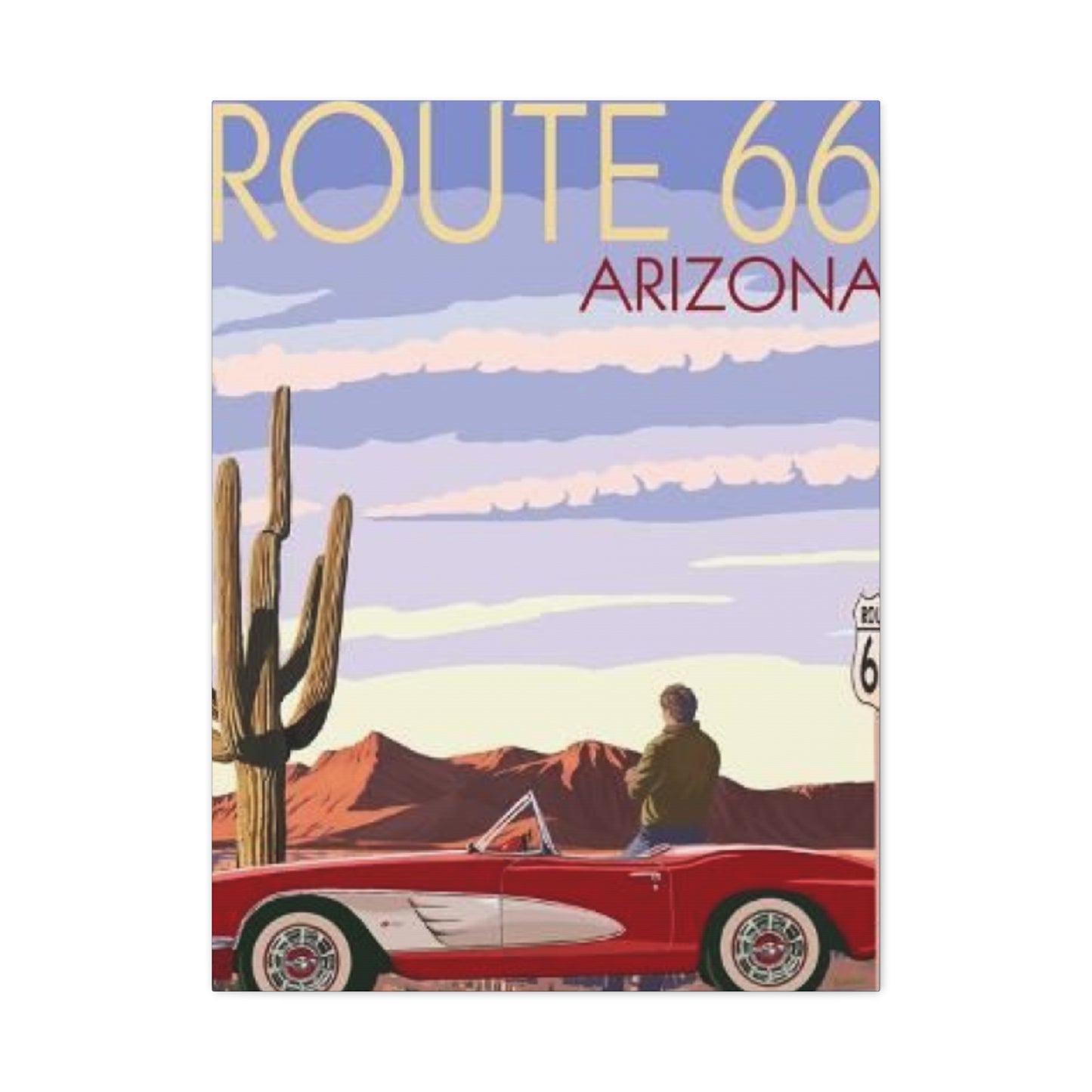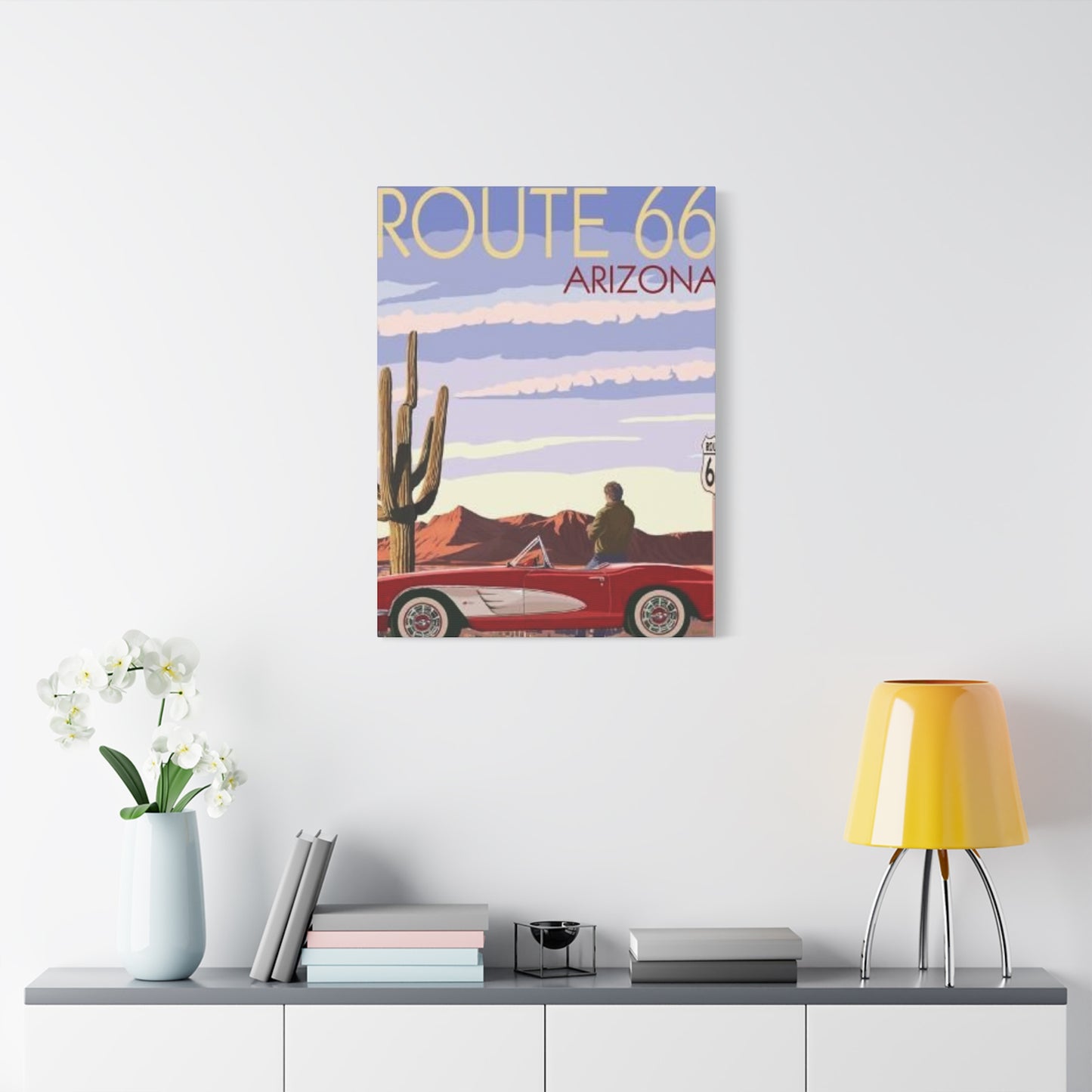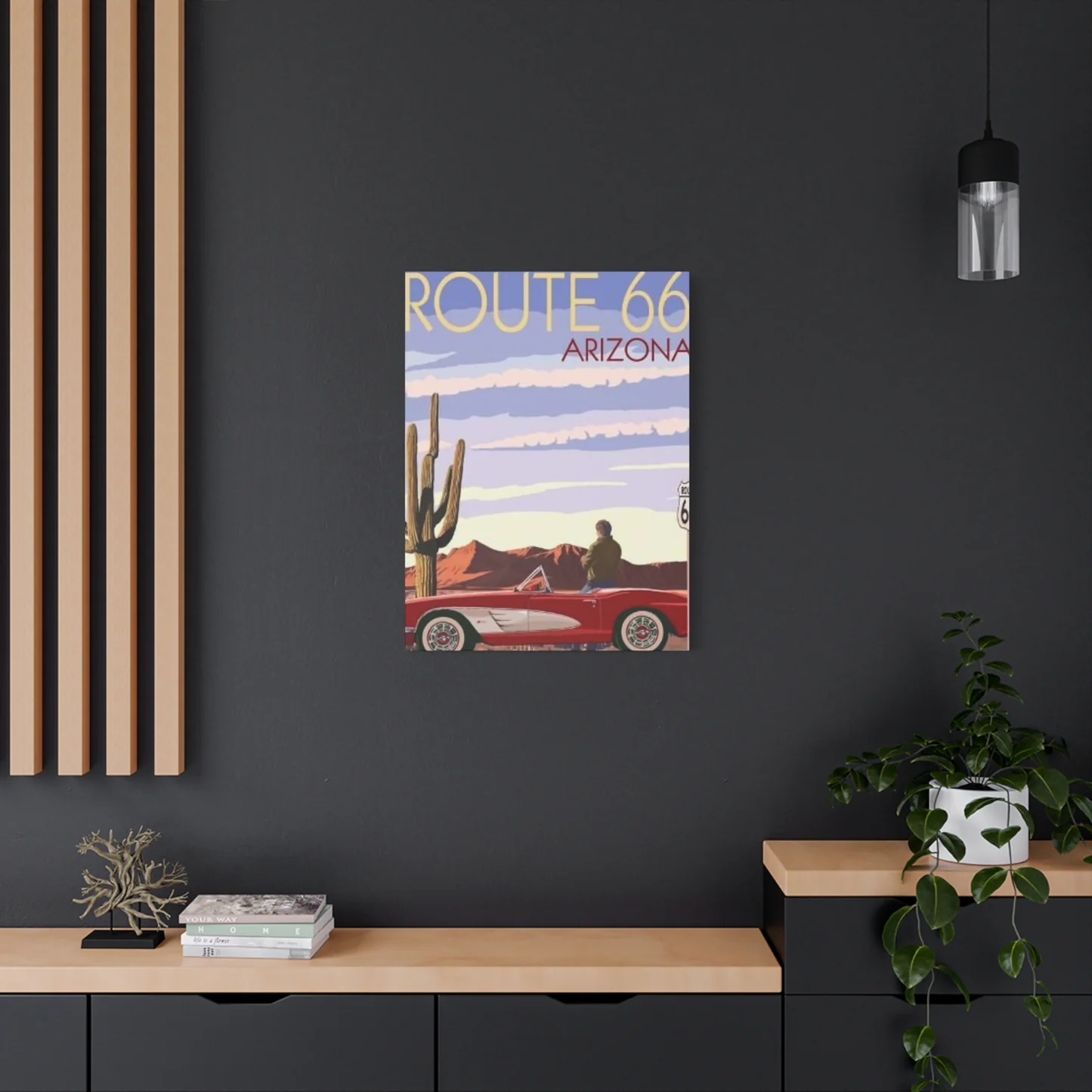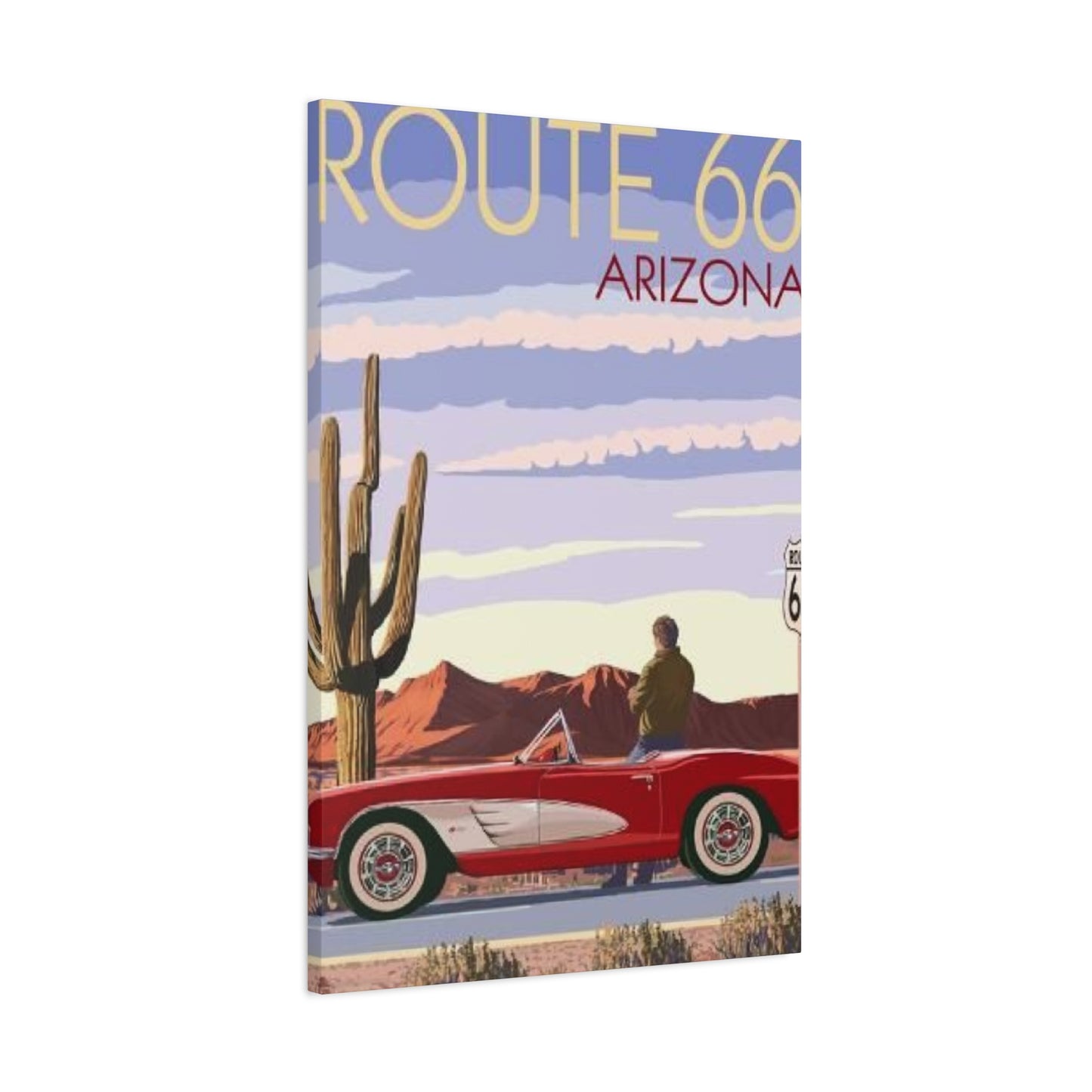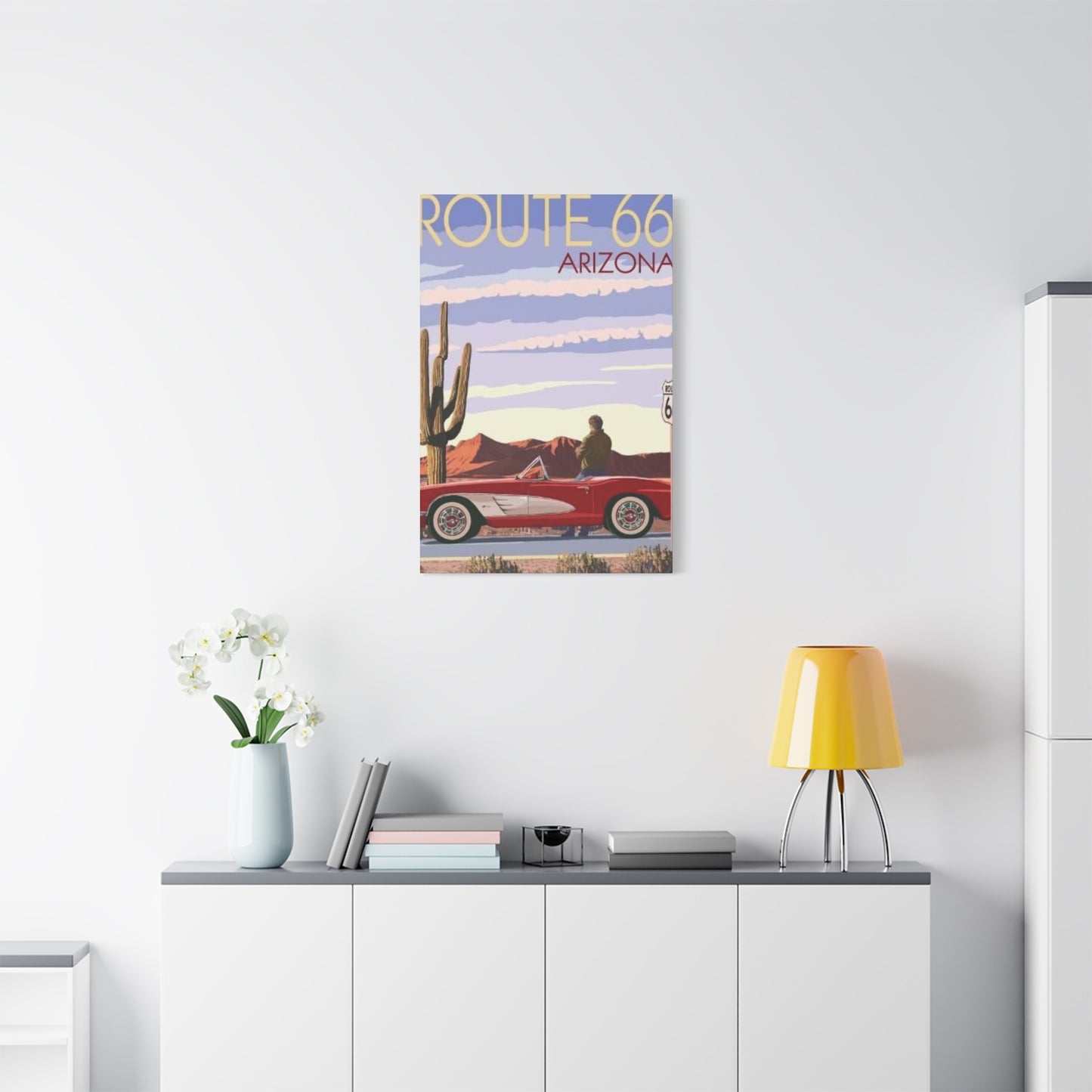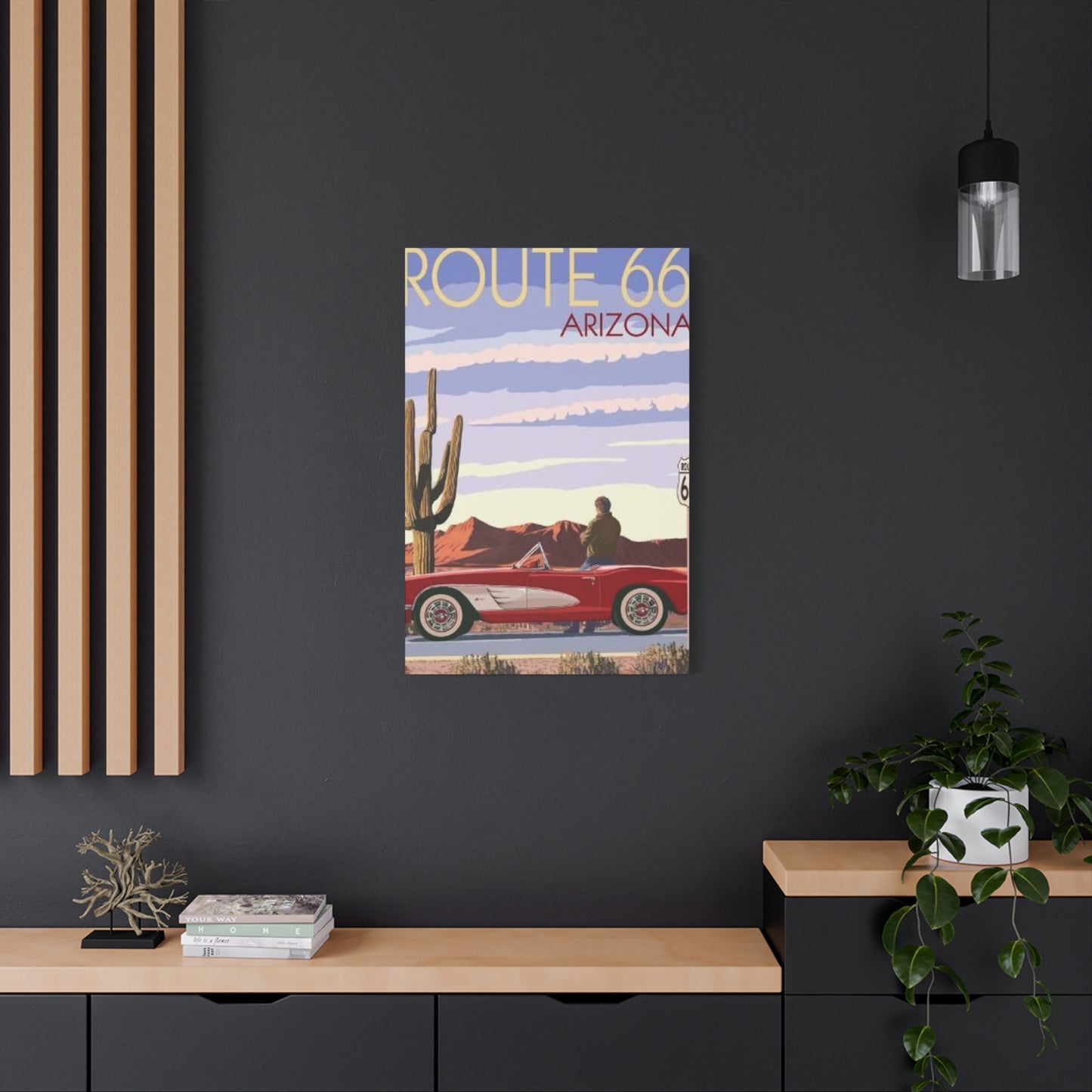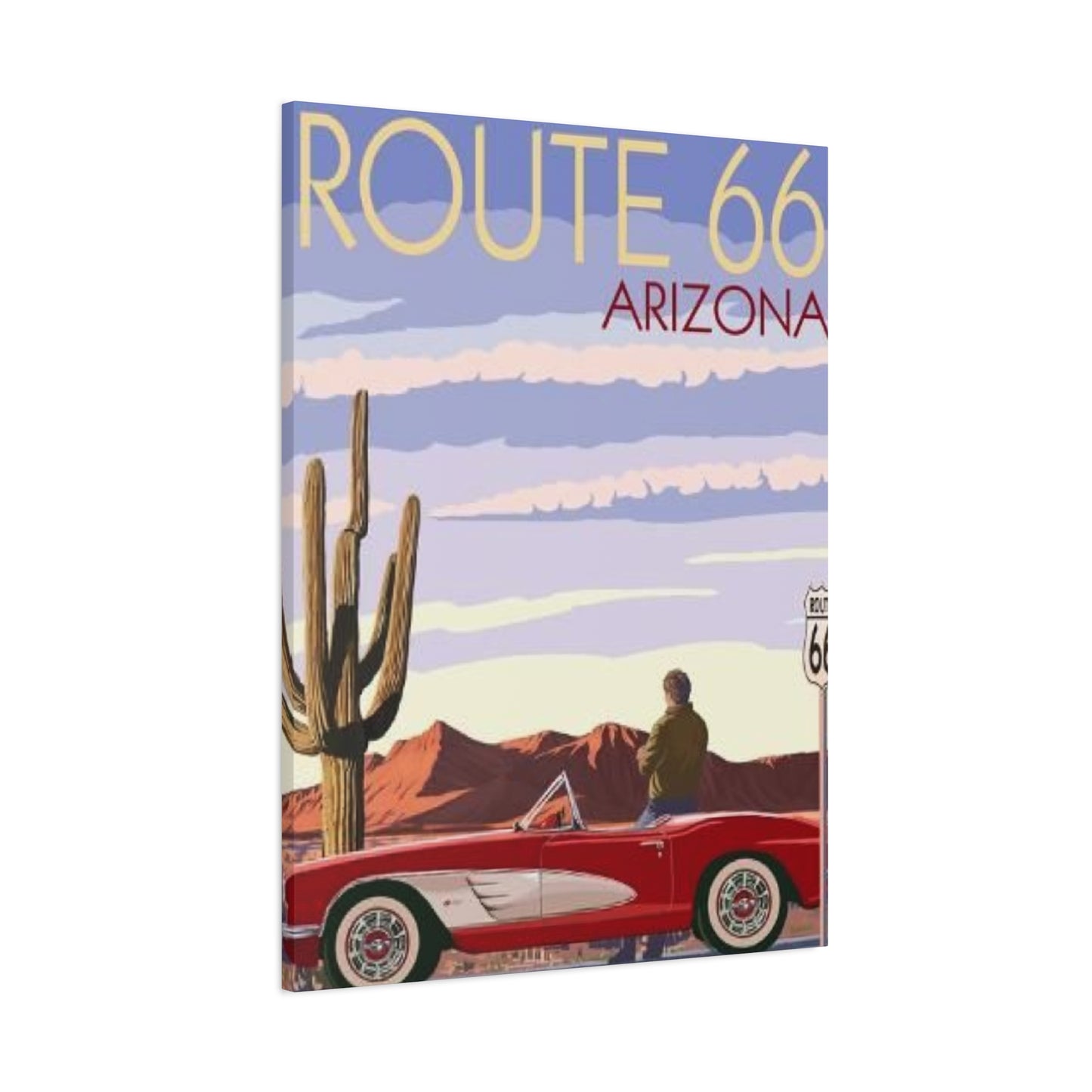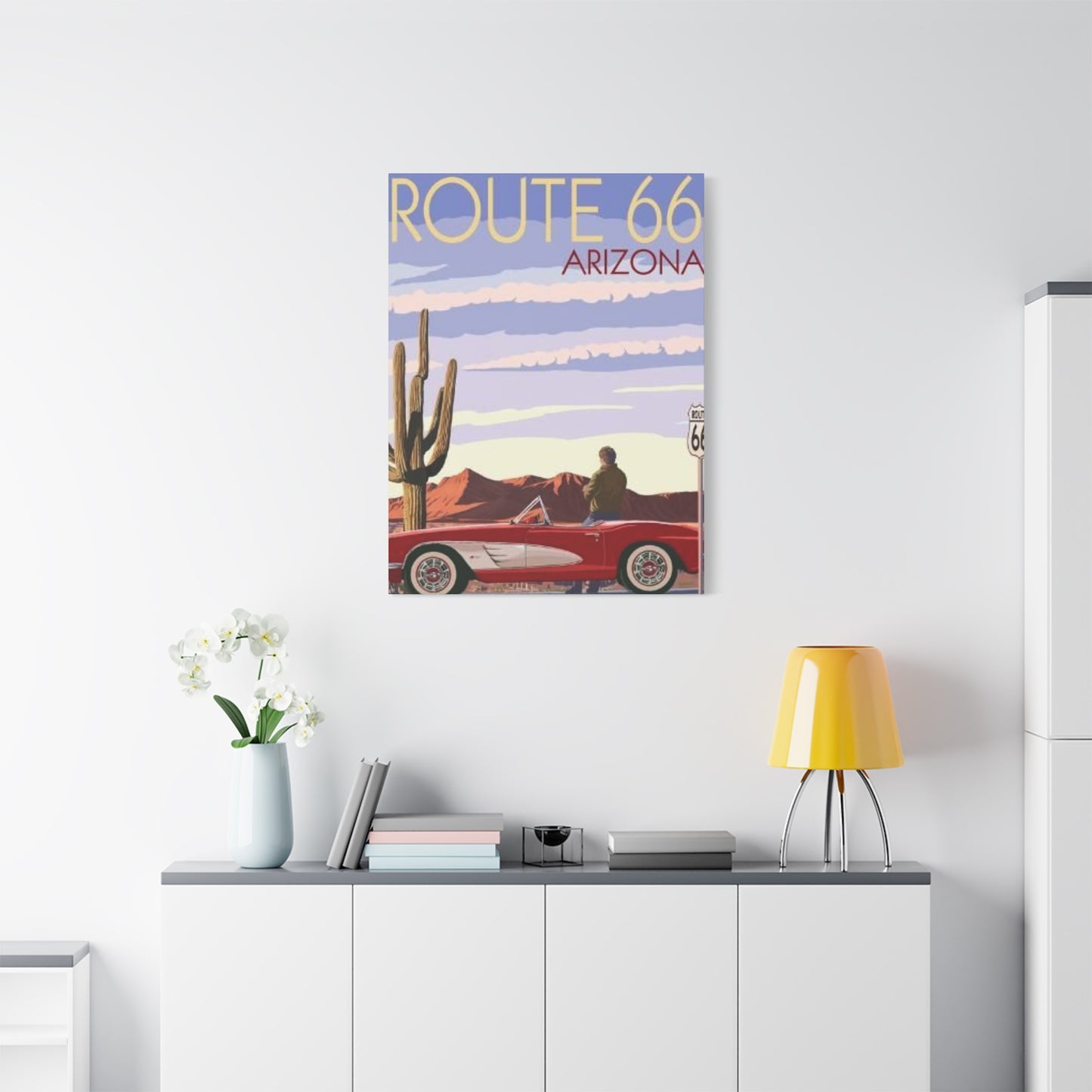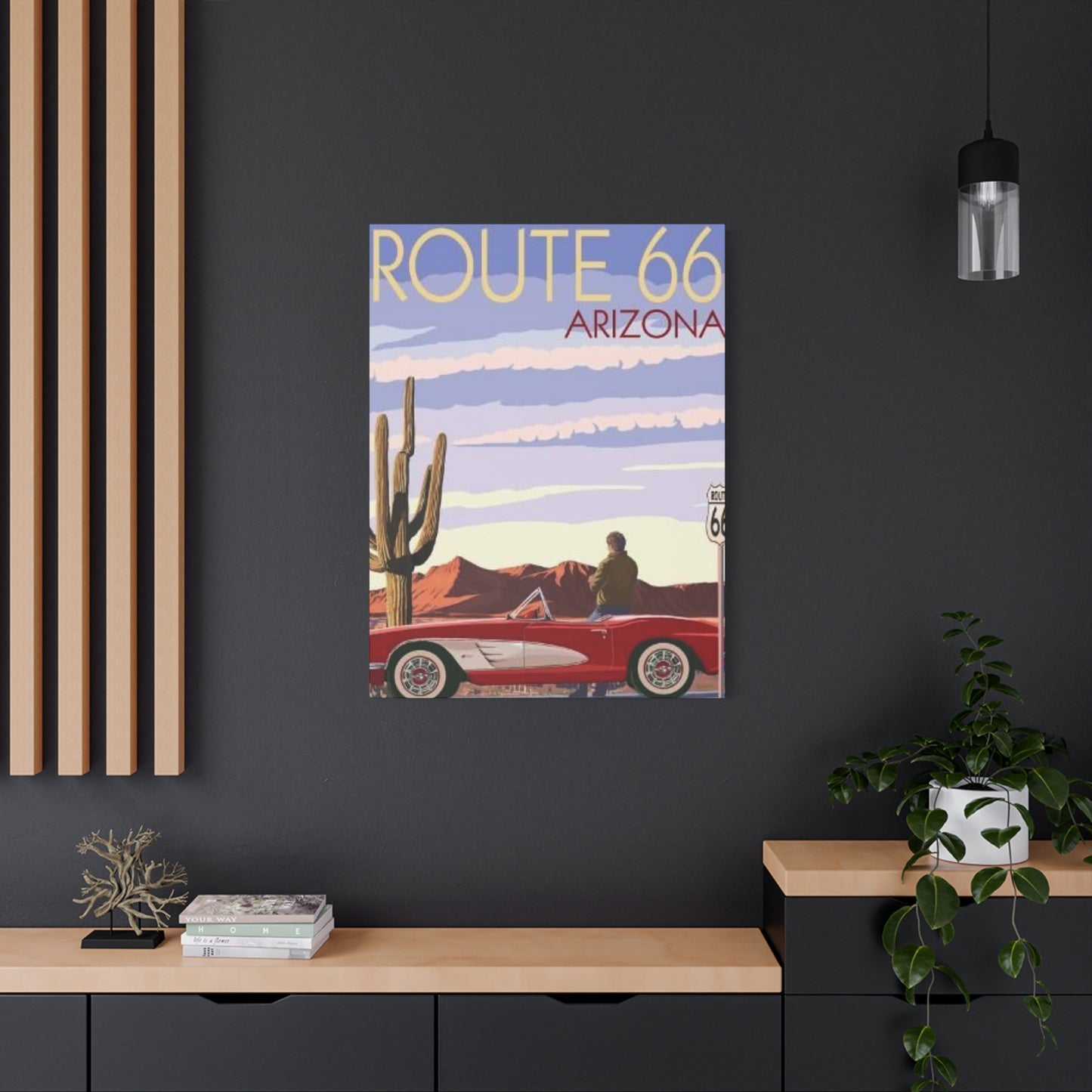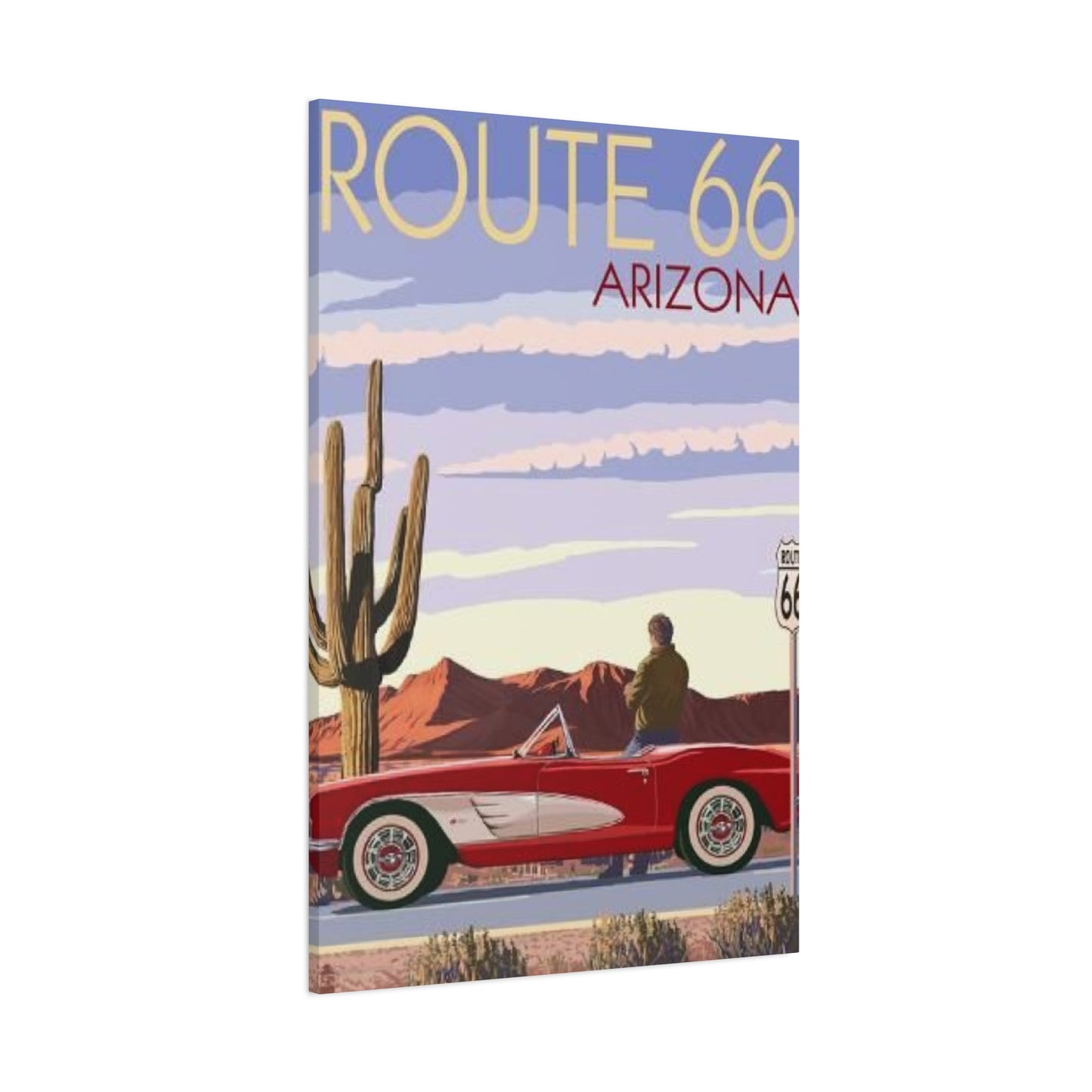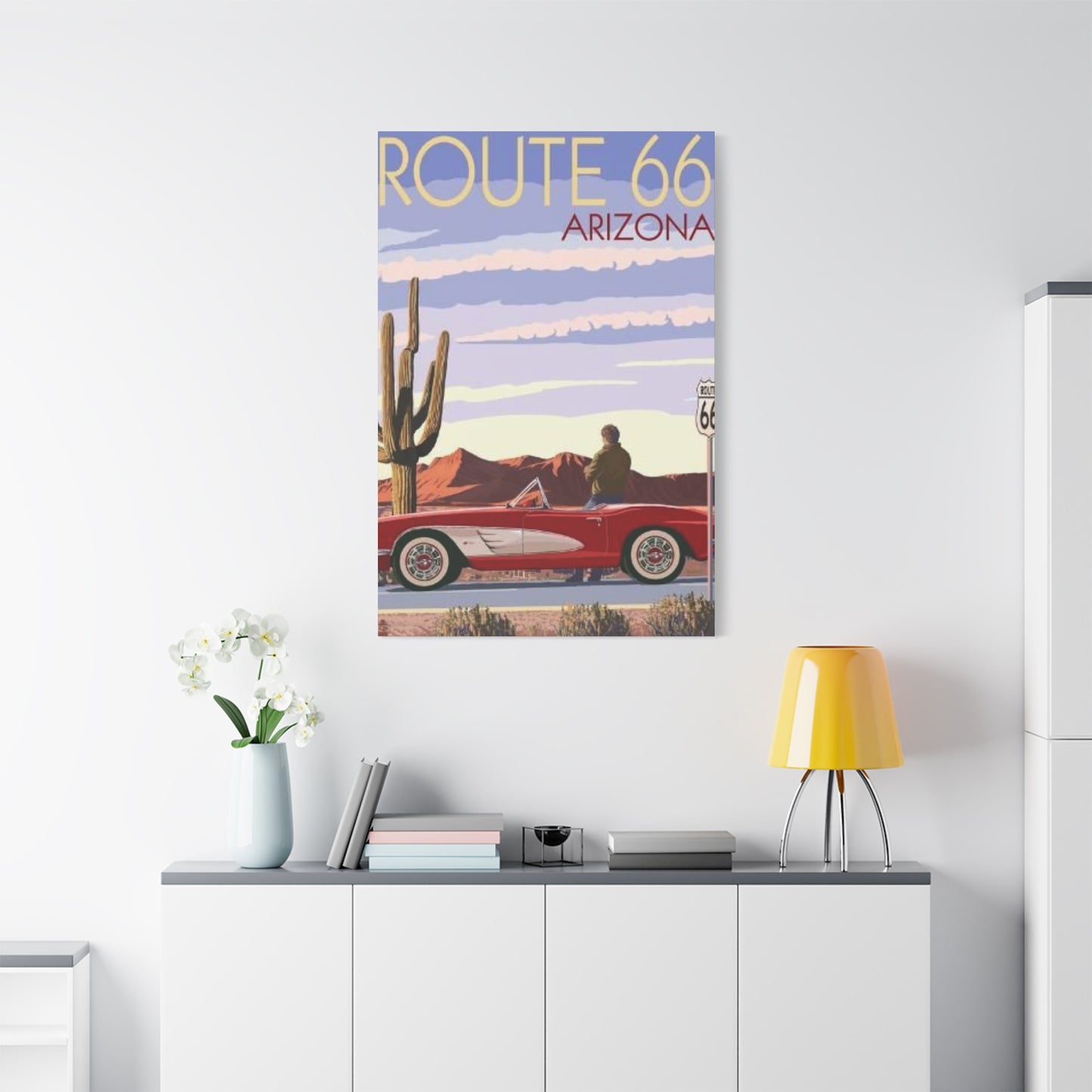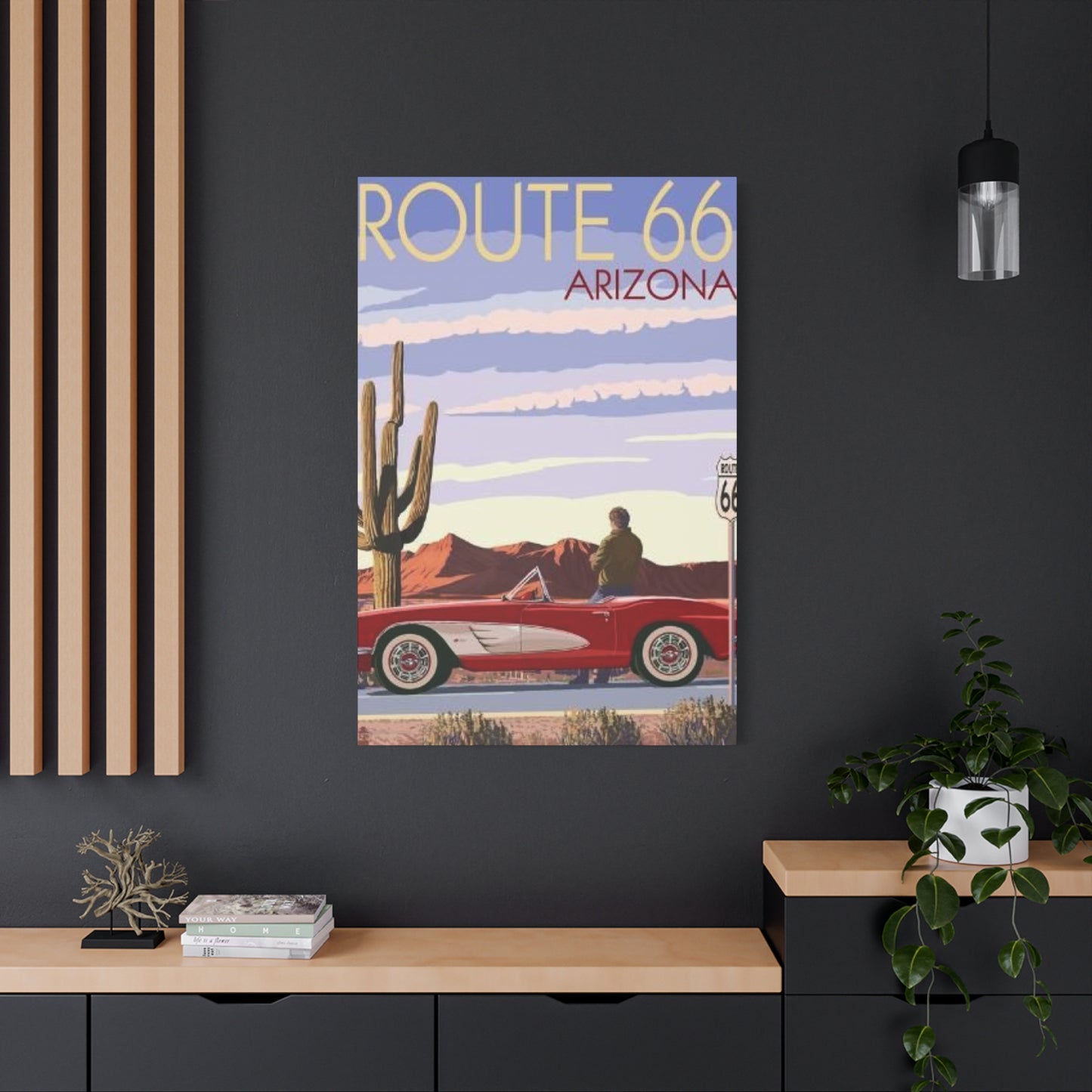Route 66 Arizona National Park Wall Art: Celebrating America's Historic Highway Through Visual Masterpieces
Route 66 Arizona National Park wall art canvas prints represent more than mere decorative elements; they embody the spirit of American adventure, freedom, and the timeless allure of the open road. These magnificent artistic representations capture the essence of one of America's most iconic highways, transforming any environment into a celebration of wanderlust and historical significance. The legendary Route 66, stretching across Arizona's breathtaking landscapes, has become synonymous with the American Dream and the pursuit of adventure that defines the nation's character.
Canvas prints featuring Route 66 Arizona National Park scenes offer homeowners, collectors, and enthusiasts an opportunity to bring the majesty of the American Southwest into their living environments. These artistic pieces serve as windows to the vast desert landscapes, towering rock formations, and endless horizons that have captivated travelers for generations. The combination of Route 66's historical importance and Arizona's natural beauty creates a powerful visual narrative that resonates with viewers on multiple levels.
The appeal of Route 66 Arizona National Park wall art extends beyond simple aesthetics. These canvas prints tell stories of perseverance, exploration, and the human desire to discover what lies beyond the next horizon. Each piece represents a moment frozen in time, capturing the golden hour light dancing across red rock formations, the stark beauty of desert vistas, or the nostalgic charm of roadside attractions that have become cultural landmarks.
Artists and photographers who specialize in Route 66 Arizona National Park imagery understand the profound emotional connection people have with this legendary highway. Their work goes beyond documentation to create artistic interpretations that evoke feelings of freedom, adventure, and the timeless appeal of the American road trip. These canvas prints serve as daily reminders of life's possibilities and the adventures that await those brave enough to venture forth.
The technical quality of modern canvas printing technology ensures that Route 66 Arizona National Park wall art maintains exceptional detail, vibrant colors, and longevity. Advanced printing processes capture the subtle gradations of desert sunsets, the intricate textures of weathered roadside signs, and the dramatic contrasts that define Arizona's landscape. This technological advancement allows viewers to experience the visual impact of these iconic scenes with remarkable clarity and depth.
Route 66 Arizona National Park wall art canvas prints also serve as educational tools, introducing viewers to the rich history and cultural significance of America's Mother Road. These pieces often feature historical landmarks, vintage automobiles, classic motels, and other elements that tell the story of American transportation evolution and westward expansion. The educational value adds depth to their aesthetic appeal, making them meaningful additions to homes, offices, and public locations.
The versatility of Route 66 Arizona National Park wall art makes these pieces suitable for various applications and environments. Whether displayed in residential living rooms, corporate offices, hospitality venues, or educational institutions, these canvas prints create focal points that generate conversation and inspire contemplation. Their ability to transform ordinary rooms into gateways to adventure makes them valuable investments in environmental enhancement.
Collectors of Route 66 memorabilia particularly appreciate high-quality canvas prints that capture the authentic spirit of the highway's Arizona segments. These pieces often become centerpieces of larger collections, complementing vintage signs, antique automobiles, and other artifacts that celebrate Route 66's cultural legacy. The artistic interpretation of familiar landmarks and landscapes adds contemporary relevance to historical appreciation.
The emotional resonance of Route 66 Arizona National Park wall art extends to multiple generations, appealing to both those who experienced the highway's golden age and younger individuals drawn to its legendary status. This cross-generational appeal makes these canvas prints excellent gifts and meaningful acquisitions that connect past and present through shared appreciation of American cultural heritage.
Route 66's passage through Arizona encompasses some of the most spectacular landscapes in the American Southwest, providing artists with endless inspiration for creating compelling wall art. From the painted desert's otherworldly beauty to the Grand Canyon's majestic depths, Arizona's Route 66 corridor offers visual experiences that translate beautifully to canvas format. These diverse landscapes ensure that Route 66 Arizona National Park wall art remains fresh and engaging, with each piece offering unique perspectives and experiences.
Historical Significance of Route 66 Through Arizona's Magnificent Terrain
Route 66's journey through Arizona represents one of the most historically significant and visually spectacular segments of America's most famous highway. Established in 1926, this legendary road served as a crucial transportation artery connecting the Midwest to the Pacific Coast, fundamentally altering the economic and social landscape of the American Southwest. The Arizona portion of Route 66 encompasses approximately 400 miles of diverse terrain, from high desert plateaus to dramatic canyon country, each mile offering unique stories and visual experiences that continue to inspire artists and travelers alike.
The historical importance of Route 66 through Arizona cannot be overstated in its role during the Great Depression and World War II era. During the 1930s Dust Bowl migration, thousands of families traveled this route seeking better opportunities in California, earning Route 66 the nickname "Mother Road" from John Steinbeck's classic novel "The Grapes of Wrath." This mass migration transformed Route 66 into a symbol of hope and perseverance, themes that continue to resonate in contemporary wall art representations.
Arizona's unique geological formations along Route 66 created natural landmarks that became integral to the highway's identity and appeal. The Painted Desert, with its multicolored layers of sedimentary rock, provided travelers with their first glimpse of the Southwest's extraordinary beauty. These formations, captured in countless photographs and artistic interpretations, continue to serve as inspiration for modern canvas prints that celebrate the enduring appeal of Route 66's Arizona segment.
The development of tourist infrastructure along Arizona's Route 66 created an entire economy based on automobile travel and roadside hospitality. Motor courts, trading posts, gas stations, and restaurants sprouted along the highway, each developing distinctive architectural styles and signage that reflected the optimism and creativity of mid-20th century America. These structures, many now preserved as historical landmarks, provide rich subject matter for wall art that celebrates both natural beauty and human ingenuity.
Native American communities along Route 66's Arizona corridor contributed significantly to the highway's cultural richness and artistic heritage. Trading posts featuring authentic Native American crafts, jewelry, and artwork became essential stops for travelers seeking genuine cultural experiences. This intersection of indigenous culture with modern transportation created unique artistic opportunities that continue to influence contemporary wall art interpretations of Route 66's Arizona legacy.
The post-war boom of the 1950s and 1960s marked Route 66's golden age, when improved automobiles and increased prosperity made cross-country travel accessible to middle-class American families. Arizona's segment became particularly popular due to its dramatic landscapes, comfortable winter climate, and abundance of roadside attractions. This period generated countless photographs and memories that now serve as source material for nostalgic wall art celebrating Route 66's heyday.
The decline of Route 66 began in the 1970s with the completion of Interstate highway systems that bypassed many historic Route 66 communities. However, this decline paradoxically increased interest in preserving and celebrating the highway's legacy through various forms of artistic expression. Wall art featuring Route 66 Arizona scenes became popular as people sought to maintain connections to this important chapter in American transportation and cultural history.
Modern preservation efforts have ensured that significant portions of Route 66 through Arizona remain accessible to contemporary travelers and artists. Organizations dedicated to Route 66 preservation work tirelessly to maintain historic structures, signage, and roadway segments that provide authentic experiences for visitors. These preservation efforts create opportunities for contemporary artists to document and interpret Route 66's continuing relevance in American culture.
The influence of Route 66's Arizona segment extends far beyond transportation history to encompass broader themes of American identity, freedom, and the relationship between humans and landscape. Artists creating wall art based on Route 66 Arizona scenes often explore these deeper themes, using the highway as a metaphor for personal journey, national character, and the ongoing American experiment in democracy and opportunity.
Contemporary interest in Route 66 Arizona wall art reflects broader cultural trends toward authentic experiences and historical connection in an increasingly digital world. These canvas prints serve as tangible links to a time when travel was slower, more deliberate, and more connected to the landscapes through which people passed. This nostalgic appeal ensures continued demand for high-quality artistic interpretations of Route 66's Arizona heritage.
The educational value of Route 66 Arizona wall art extends beyond mere decoration to provide viewers with insights into American history, geography, and cultural evolution. Museums, schools, and cultural institutions often incorporate these artistic pieces into exhibits and educational programs that teach about westward migration, automobile culture, and the development of the American Southwest. This educational application adds depth and purpose to artistic appreciation.
Route 66's path through Arizona includes numerous segments that have achieved iconic status among travelers, photographers, and artists. The stretch through the Painted Desert, the approach to the Grand Canyon, and the passage through historic towns like Williams and Flagstaff each offer distinctive visual experiences that translate beautifully to canvas format. These diverse segments ensure that Route 66 Arizona wall art encompasses a wide range of moods, colors, and compositions.
The seasonal variations along Route 66's Arizona corridor provide artists with constantly changing inspiration for wall art creation. Spring wildflower blooms transform desert landscapes into colorful carpets, while winter snow creates dramatic contrasts with red rock formations. Summer's intense light and shadow patterns offer bold compositional opportunities, and autumn's clear skies provide perfect conditions for capturing the highway's majestic vistas.
Artistic Techniques and Styles in Route 66 Canvas Print Creation
The creation of exceptional Route 66 Arizona National Park wall art requires mastery of various artistic techniques and styles that effectively capture the unique characteristics of this legendary highway and its surrounding landscapes. Contemporary artists working in this genre employ diverse approaches ranging from photorealistic representations to impressionistic interpretations, each technique offering different advantages in conveying the emotional and visual impact of Route 66's Arizona segment.
Photographic realism remains one of the most popular approaches for Route 66 Arizona wall art, as it allows viewers to experience the authentic beauty and character of the highway's landscapes with remarkable detail and clarity. Artists specializing in photorealistic techniques spend considerable time studying lighting conditions, atmospheric effects, and geological formations to create canvas prints that transport viewers directly to specific locations along the historic route. This approach particularly appeals to collectors who value accuracy and documentary-style representation.
High Dynamic Range (HDR) photography techniques have revolutionized the creation of Route 66 Arizona wall art by allowing artists to capture the extreme contrast between bright desert skies and shadowed canyon walls. These techniques enable the preservation of detail in both highlight and shadow areas, creating images that more closely match what the human eye actually perceives when viewing these dramatic landscapes. The result is canvas prints with exceptional depth and visual impact.
Impressionistic approaches to Route 66 Arizona wall art offer artists freedom to emphasize emotional and atmospheric qualities over precise representation. These techniques allow for creative interpretation of color relationships, light effects, and compositional elements that capture the feeling of traveling Route 66 rather than simply documenting its appearance. Impressionistic Route 66 wall art often features bold color palettes and expressive brushwork that convey the energy and excitement of highway travel.
Digital art techniques have opened new possibilities for Route 66 Arizona wall art creation, allowing artists to combine photographic elements with painted or illustrated components. These hybrid approaches enable the creation of unique interpretations that blend realistic landscape documentation with stylized elements like vintage automobiles, classic signage, or historical figures. Digital techniques also facilitate the creation of composite images that combine multiple locations or time periods into single compelling compositions.
Vintage-style processing techniques have become increasingly popular for Route 66 Arizona wall art, as they help contemporary images achieve the nostalgic character associated with the highway's golden age. These techniques involve careful manipulation of color saturation, contrast, and grain structure to create images that appear to have been created during Route 66's heyday. This approach appeals to viewers seeking authentic period atmosphere in their wall art selections.
Panoramic composition techniques are particularly effective for Route 66 Arizona wall art, as they allow artists to capture the sweeping vistas and endless horizons that define the highway's character. These wide-format compositions emphasize the scale and grandeur of Arizona's landscapes while incorporating Route 66 elements like roadway, signage, or historic structures. Panoramic formats create dramatic focal points that command attention in any display environment.
Color theory plays a crucial role in effective Route 66 Arizona wall art creation, with artists carefully selecting and manipulating color palettes to evoke specific moods and emotional responses. The warm earth tones of Arizona's desert landscapes provide natural color harmonies, while the addition of complementary colors through sky effects, vegetation, or artificial elements creates visual excitement and engagement. Understanding color relationships enables artists to create wall art that enhances rather than conflicts with display environments.
Lighting analysis and manipulation represent critical skills for Route 66 Arizona wall art creators, as the quality and direction of light dramatically affect the mood and visual impact of landscape scenes. Artists must understand how different lighting conditions affect color temperature, shadow patterns, and atmospheric perspective to create convincing and compelling images. The dramatic lighting conditions common along Route 66's Arizona segment provide excellent opportunities for creating visually striking wall art.
Compositional techniques specific to highway and landscape photography require artists to balance multiple visual elements including roadway lines, horizon placement, foreground interest, and background drama. The rule of thirds, leading lines, and other classical composition principles must be adapted to the unique challenges of Route 66 subject matter. Effective composition ensures that wall art pieces maintain visual interest and emotional impact over extended viewing periods.
Texture rendering techniques are essential for Route 66 Arizona wall art that accurately represents the diverse surface qualities found along the highway. From weathered pavement and vintage signage to natural rock formations and desert vegetation, artists must develop skills for depicting various textural qualities that add tactile interest to their work. Advanced canvas printing technology helps preserve these textural details in the final wall art product.
Atmospheric perspective techniques help Route 66 Arizona wall art creators convey the vast scale and depth of southwestern landscapes. These techniques involve careful manipulation of color saturation, contrast, and detail level to create the illusion of atmospheric haze and distance that characterizes desert environments. Proper application of atmospheric perspective creates wall art with convincing three-dimensional depth and spatial relationships.
Historical accuracy considerations influence artistic technique selection for Route 66 Arizona wall art intended to document or celebrate specific time periods. Artists working in historical genres must research period-appropriate vehicles, signage, clothing, and architectural details to ensure their work maintains authenticity. This attention to historical detail enhances the educational and cultural value of Route 66 wall art pieces.
Emotional storytelling through artistic technique represents an advanced approach to Route 66 Arizona wall art creation that goes beyond simple documentation to convey deeper themes and meanings. Artists employing these techniques use color, composition, lighting, and subject selection to tell stories about human experiences, cultural change, and the relationship between people and landscape. This approach creates wall art with lasting emotional resonance and intellectual engagement.
Photography and Digital Enhancement Methods for Superior Canvas Quality
Modern Route 66 Arizona National Park wall art creation relies heavily on advanced photography and digital enhancement techniques that ensure superior canvas quality and exceptional visual impact. Professional photographers and artists working in this specialized field employ sophisticated equipment, software, and methodologies to capture and process images that meet the demanding requirements of high-quality wall art production.
Camera equipment selection represents a fundamental consideration for Route 66 Arizona wall art photography, with full-frame digital cameras providing the best combination of image quality, dynamic range, and low-light performance necessary for capturing the diverse lighting conditions encountered along the historic highway. High-resolution sensors ensure that resulting images contain sufficient detail for large-format canvas printing while maintaining sharp focus and minimal noise across the entire frame.
Lens selection strategies for Route 66 Arizona photography require careful consideration of the diverse subject matter and compositional requirements typical of highway and landscape scenes. Wide-angle lenses excel at capturing sweeping desert vistas and dramatic sky formations, while telephoto lenses enable isolation of specific architectural details or distant landscape features. Prime lenses often provide superior optical quality for critical applications, though high-quality zoom lenses offer greater flexibility in dynamic shooting situations.
Professional lighting equipment becomes essential when photographing Route 66 Arizona subjects during challenging lighting conditions or when creating composite images that combine multiple exposures. Portable flash units, reflectors, and diffusion equipment enable photographers to control shadow areas and highlight details that might otherwise be lost in the extreme contrast typical of desert environments. Understanding artificial lighting techniques expands creative possibilities for Route 66 wall art creation.
Tripod stability and camera support systems are crucial for Route 66 Arizona photography, particularly when employing long exposures to capture vehicle light trails, star movements, or smooth water effects in desert springs and rivers. Carbon fiber tripods provide the best combination of stability and portability for location work, while specialized heads enable precise composition adjustment and camera positioning. Stable camera support ensures maximum image sharpness and enables advanced techniques like focus stacking and exposure blending.
Digital RAW file processing represents a critical phase in Route 66 Arizona wall art creation, as it allows photographers maximum flexibility in optimizing image quality, color balance, and tonal distribution. Professional software applications provide extensive tools for shadow recovery, highlight management, color correction, and noise reduction that are essential for preparing images for high-quality canvas printing. Proper RAW processing can dramatically improve the final quality of wall art pieces.
Color space management throughout the digital workflow ensures that Route 66 Arizona wall art maintains color accuracy from capture through final printing. Working in wide-gamut color environments like Adobe RGB or ProPhoto RGB preserves the full range of colors present in southwestern landscapes, while proper monitor calibration ensures accurate color representation during editing. Understanding color management prevents disappointing results and ensures that canvas prints accurately reproduce intended colors.
Noise reduction techniques become particularly important for Route 66 Arizona wall art captured in low-light conditions or at high ISO settings. Modern software applications employ artificial intelligence and advanced algorithms to minimize digital noise while preserving fine detail and texture information. Proper noise reduction ensures that canvas prints maintain smooth tonal gradations and professional appearance even when source images were captured under challenging conditions.
Sharpening and detail enhancement methods prepare Route 66 Arizona images for the specific requirements of canvas printing, which can soften fine details due to the textured surface of canvas materials. Output sharpening techniques must be calibrated for the intended viewing distance and canvas texture to ensure optimal detail reproduction. Advanced sharpening methods can enhance the perception of detail and clarity in final wall art pieces.
High Dynamic Range (HDR) processing techniques enable Route 66 Arizona wall art creators to capture and display the full range of brightness values present in high-contrast desert scenes. Multiple exposure blending allows preservation of detail in both bright sky areas and dark shadow regions that would be impossible to capture in single exposures. Modern HDR processing avoids the unrealistic appearance of early HDR techniques while maintaining natural tonality and color relationships.
Focus stacking methodologies prove valuable for Route 66 Arizona wall art requiring maximum depth of field, particularly in compositions that include both close foreground elements and distant background features. This technique involves capturing multiple images at different focus distances and combining them digitally to create images with sharp focus throughout the entire scene. Focus stacking enables creative compositions that would be impossible with traditional depth of field limitations.
Panoramic stitching techniques allow Route 66 Arizona wall art creators to capture extremely wide vistas that exceed the field of view of even ultra-wide-angle lenses. Multi-row panoramic techniques can create images with both exceptional width and height that showcase the full grandeur of southwestern landscapes. Advanced stitching software automatically aligns and blends multiple images while correcting for distortion and exposure variations.
Dust and sensor cleaning protocols are essential for Route 66 Arizona photography due to the dusty conditions commonly encountered in desert environments. Regular sensor cleaning prevents dust spots from appearing in images and requiring extensive digital retouching. Preventive measures like using UV filters and changing lenses in protected environments help minimize dust contamination during shooting sessions.
Digital composition and montage techniques enable Route 66 Arizona wall art creators to combine elements from multiple photographs or add historical elements to contemporary scenes. These techniques require advanced masking and blending skills to create seamless compositions that maintain realistic lighting and perspective relationships. Digital composition allows creation of interpretive wall art that goes beyond simple documentation to explore themes and concepts related to Route 66's cultural significance.
Color grading and mood enhancement techniques help Route 66 Arizona wall art achieve specific emotional impacts and aesthetic goals. Professional color grading involves subtle adjustments to color relationships, saturation levels, and tonal distribution that enhance the mood and atmosphere of images without creating unrealistic appearances. Understanding color psychology enables artists to create wall art that evokes desired emotional responses in viewers.
Printing Technologies and Canvas Materials for Optimal Durability
The selection of appropriate printing technologies and canvas materials represents a crucial factor in creating Route 66 Arizona National Park wall art that maintains exceptional quality and longevity. Modern printing capabilities have advanced significantly, offering artists and consumers multiple options for producing canvas prints that accurately reproduce colors, maintain detail clarity, and withstand environmental challenges over extended periods.
Giclée printing technology has emerged as the gold standard for fine art reproduction, including Route 66 Arizona wall art canvas prints. This sophisticated printing method utilizes microscopic ink droplets applied with extreme precision to create images with exceptional color accuracy, smooth tonal gradations, and remarkable detail reproduction. Giclée printers capable of handling canvas substrates employ multiple ink colors to achieve wider color gamuts and more accurate color matching than traditional printing methods.
Inkjet printing systems designed specifically for canvas applications use specialized inks formulated to penetrate canvas fibers while maintaining color integrity and preventing bleeding or feathering. Pigment-based inks offer superior longevity compared to dye-based alternatives, with some formulations rated for over 100 years of display life under proper conditions. These archival inks ensure that Route 66 Arizona wall art maintains its visual impact and investment value over time.
Canvas substrate selection significantly affects the final appearance and durability of Route 66 Arizona wall art prints. Artist-grade canvas materials manufactured from cotton or linen fibers provide superior texture, flexibility, and longevity compared to synthetic alternatives. Canvas weight and weave patterns influence the final appearance of printed images, with heavier canvases providing better dimensional stability and finer weaves enabling superior detail reproduction.
Coating and preparation processes applied to canvas substrates before printing affect ink adhesion, color saturation, and overall print quality. Professional-grade canvas materials receive specialized coatings that optimize ink acceptance while preserving the natural texture and feel of canvas fibers. These coatings also provide protection against moisture, UV radiation, and atmospheric pollutants that could degrade print quality over time.
Stretching and mounting techniques significantly impact the long-term stability and appearance of Route 66 Arizona canvas wall art. Professional stretching involves precisely tensioning canvas materials over wooden frames constructed from kiln-dried, stable wood species. Proper stretching prevents sagging, warping, or tension irregularities that could affect image appearance. Museum-quality stretching techniques ensure that canvas prints maintain their original appearance for decades.
Frame construction materials and methods affect both the aesthetic appeal and structural integrity of Route 66 Arizona wall art installations. Solid wood frames provide superior strength and stability compared to composite materials, while acid-free construction prevents chemical interactions that could affect canvas or ink longevity. Professional framing techniques incorporate expansion joints and flexible mounting systems that accommodate natural wood movement and environmental changes.
Protective finishing treatments applied to completed Route 66 Arizona canvas prints provide additional protection against environmental hazards while preserving image quality. UV-resistant varnishes or coatings filter harmful radiation that could cause color fading or canvas degradation. These protective treatments must be carefully selected to avoid affecting image appearance while providing long-term protection benefits.
Quality control procedures throughout the printing process ensure that Route 66 Arizona wall art meets professional standards for color accuracy, detail reproduction, and freedom from defects. Professional printing facilities employ color management systems, regular calibration procedures, and multiple inspection stages to identify and correct potential issues before products reach customers. Rigorous quality control prevents disappointing results and ensures customer satisfaction.
Storage and handling protocols for Route 66 Arizona canvas prints protect finished products from damage during shipping and installation. Professional packaging systems provide protection against moisture, crushing, and other shipping hazards while maintaining canvas tension and preventing wrinkles or creases. Proper handling techniques prevent fingerprints, scratches, or other damage that could affect final appearance.
Environmental considerations affecting Route 66 Arizona wall art longevity include temperature, humidity, lighting conditions, and air quality in display locations. Canvas prints perform best in stable environmental conditions with moderate temperature and humidity levels, filtered lighting, and clean air. Understanding these environmental factors helps customers select appropriate display locations and implement protective measures that maximize print longevity.
Color calibration and profiling systems ensure that Route 66 Arizona wall art prints accurately reproduce intended colors across different viewing conditions and display environments. Professional color management involves creating custom profiles for specific printer, ink, and canvas combinations to achieve optimal color accuracy. Regular calibration procedures maintain color consistency across multiple print runs and ensure predictable results.
Maintenance and care procedures enable Route 66 Arizona canvas wall art owners to preserve their investments and maintain optimal appearance over time. Proper cleaning techniques remove dust and atmospheric pollutants without damaging canvas or ink surfaces. Professional conservation methods can address more serious issues like staining, fading, or physical damage that might occur during extended display periods.
Custom sizing and formatting options allow Route 66 Arizona wall art to be optimized for specific display environments and aesthetic preferences. Professional printing facilities can accommodate various aspect ratios, custom dimensions, and special mounting requirements to create unique installations. These customization capabilities ensure that wall art pieces integrate seamlessly with existing décor and architectural features.
Technology advancement continues to improve the quality and capabilities of Route 66 Arizona wall art production. Emerging printing technologies, new ink formulations, and advanced canvas materials promise even better color reproduction, increased longevity, and expanded creative possibilities. Staying current with technological developments ensures access to the best available options for Route 66 wall art creation and reproduction.
Color Theory and Composition Principles in Route 66 Artistic Representations
Understanding and applying color theory principles is fundamental to creating compelling Route 66 Arizona National Park wall art that effectively communicates the emotional and visual essence of America's most famous highway. The unique color palette of Arizona's southwestern landscapes provides artists with rich opportunities to explore color relationships, temperature variations, and harmonic combinations that enhance the viewing experience and create lasting emotional connections.
The natural color palette of Route 66's Arizona corridor encompasses warm earth tones ranging from deep reds and oranges in sandstone formations to subtle beiges and browns in desert soils. These warm colors create a foundation that evokes feelings of comfort, adventure, and connection to the natural world. Artists working with Route 66 Arizona subject matter must understand how to balance these dominant warm tones with cooler accent colors to create visually engaging compositions that avoid monotony.
Complementary color relationships play a crucial role in Route 66 Arizona wall art composition, with the warm earth tones of desert landscapes naturally pairing with cool blue skies to create dynamic visual tension. This fundamental color relationship appears throughout successful Route 66 wall art, where artists leverage the natural contrast between warm land and cool sky to create compositions that feel balanced and visually satisfying. Understanding complementary relationships enables artists to make conscious color choices that enhance rather than compete with natural color harmonies.
Color temperature considerations become particularly important when depicting the changing light conditions that characterize different times of day along Route 66's Arizona segment. Morning light tends toward cooler temperatures with blue and violet undertones, while afternoon and evening light becomes progressively warmer with yellow, orange, and red characteristics. Artists must understand how color temperature affects mood and atmosphere to create wall art that accurately conveys specific temporal experiences.
Analogous color schemes work particularly well for Route 66 Arizona wall art, as the natural landscape features colors that exist in close proximity on the color wheel. Desert scenes dominated by reds, oranges, and yellows create harmonious compositions that feel unified and peaceful. Artists can create sophisticated variations within analogous schemes by adjusting saturation levels and value relationships to maintain visual interest while preserving overall harmony.
Triadic color relationships offer more dynamic possibilities for Route 66 Arizona wall art, though they require careful handling to avoid creating compositions that feel chaotic or unnatural. Artists might incorporate turquoise accents found in Native American jewelry or pottery alongside the dominant warm earth tones and deep blue skies to create engaging triadic relationships. Success with triadic schemes requires balancing the intensity and distribution of colors to maintain compositional stability.
Value relationships independent of color choices significantly affect the success of Route 66 Arizona wall art compositions. The strong contrast between light and shadow in desert environments provides natural drama that artists must carefully manage to create readable and engaging images. Understanding how to control value relationships enables artists to guide viewer attention, create depth illusions, and establish clear focal hierarchies within their compositions.
Atmospheric perspective effects rely heavily on color and value manipulation to create convincing illusions of depth and distance in Route 66 Arizona landscape scenes. Distant mountains and rock formations appear cooler and lighter than foreground elements due to atmospheric interference. Artists must understand these natural effects and exaggerate them when necessary to create wall art with convincing spatial relationships and dramatic depth.
Color saturation strategies help Route 66 Arizona wall art artists balance realism with visual impact. Highly saturated colors create excitement and energy but can appear unnatural if overused. Selective use of saturated colors as accent elements while maintaining more subdued saturation levels in dominant areas creates compositions that feel both realistic and visually engaging. Understanding saturation relationships enables artists to create wall art that maintains viewer interest without appearing garish or artificial.
Seasonal color variations along Route 66's Arizona corridor provide artists with diverse palette options and compositional possibilities. Spring wildflower blooms introduce temporary splashes of bright color against neutral desert backgrounds, while autumn aspens add golden highlights to higher elevation areas. Winter snow creates dramatic value contrasts and introduces cool color temperature variations. Understanding seasonal changes enables artists to create diverse body of work while maintaining consistent Route 66 themes.
Cultural color associations influence viewer responses to Route 66 Arizona wall art, with certain colors carrying specific meanings and emotional connotations. Red, orange, and yellow earth tones evoke warmth, comfort, and connection to natural environments, while blue skies suggest freedom, openness, and infinite possibilities. Artists must consider these cultural associations when making color choices to ensure their wall art communicates intended messages and emotions.
Color psychology applications help Route 66 Arizona wall art creators understand how different colors affect human emotions and behavior. Warm colors tend to advance visually and create feelings of energy and excitement, while cool colors recede and promote calm, contemplative moods. Understanding color psychology enables artists to create wall art that achieves specific emotional objectives and enhances particular types of display environments.
Lighting design considerations affect how colors appear in Route 66 Arizona wall art when displayed in various environments. Different types of artificial lighting can shift color appearances and affect the overall mood of artwork. Artists creating wall art for specific display environments must consider lighting conditions and may need to adjust color relationships to ensure optimal appearance under available lighting conditions.
Digital color management throughout the creative process ensures that Route 66 Arizona wall art maintains color integrity from initial capture through final printing and display. Working in appropriate color environments, maintaining proper monitor calibration, and understanding printer color capabilities prevents color disappointment and ensures that finished wall art accurately reproduces intended color relationships. Professional color management becomes particularly important for wall art intended for commercial or professional display applications.
Design Elements That Capture the Essence of America's Mother Road
Creating authentic Route 66 Arizona National Park wall art requires careful attention to design elements that embody the historic highway's character, cultural significance, and visual identity. These elements extend beyond simple landscape documentation to encompass the human-made features, architectural styles, typography, and cultural symbols that have become synonymous with Route 66's legendary status in American culture.
Vintage signage represents one of the most recognizable and emotionally resonant design elements in Route 66 Arizona wall art. The iconic shield-shaped Route 66 markers, classic neon motel signs, and hand-painted advertising displays create immediate visual connections to the highway's golden age. Artists incorporating signage elements must understand period-appropriate typography, color schemes, and materials to maintain authenticity while avoiding copyright infringement issues that could affect commercial applications.
Architectural elements characteristic of Route 66's development period provide rich subject matter for wall art that celebrates the highway's cultural heritage. Art Deco influences, streamline moderne styling, and vernacular roadside architecture created distinctive visual languages that remain immediately recognizable today. Motor courts, gas stations, diners, and trading posts each developed specific architectural vocabularies that artists can incorporate to enhance the historical authenticity of their work.
Automotive elements from Route 66's golden age serve as powerful design components that immediately establish temporal context and cultural associations. Classic American automobiles from the 1940s through 1960s, vintage motorcycles, and period-appropriate trucks and trailers help viewers connect with specific historical periods and travel experiences. Artists must research appropriate vehicle models, styling details, and condition characteristics to maintain historical accuracy.
Typography and lettering styles authentic to Route 66's era contribute significantly to the overall design impact and historical authenticity of wall art pieces. Hand-painted signs, vintage advertising fonts, and period-appropriate graphics create visual connections to mid-20th century American commercial design. Understanding historical typography helps artists create compositions that feel genuinely authentic rather than merely nostalgic or artificially retro.
Color palette selections based on period-appropriate materials, pigments, and fading patterns help Route 66 Arizona wall art achieve authentic vintage character. Desert sun and weathering effects created specific color evolution patterns in painted signs, building exteriors, and vehicle finishes that artists can study and incorporate. Understanding how colors changed over time enables creation of wall art that captures the authentic patina of age without appearing artificially distressed.
Geometric design elements inspired by mid-century modern and Art Deco movements provide compositional frameworks for Route 66 Arizona wall art that celebrates the highway's design heritage. Streamlined forms, repetitive patterns, stylized sunburst motifs, and geometric abstractions of southwestern landscape features create visual connections to the optimistic, forward-looking design philosophy of Route 66's golden age.
Native American design influences reflect the cultural richness of Route 66's Arizona corridor and provide opportunities for artists to acknowledge the indigenous heritage of the region. Traditional pottery patterns, textile designs, jewelry motifs, and architectural elements can be thoughtfully incorporated to create wall art that celebrates cultural diversity while respecting indigenous intellectual property and cultural sensitivities.
Landscape integration techniques help artists create Route 66 Arizona wall art that successfully combines human-made and natural elements into unified compositions. The relationship between highway infrastructure and desert landscapes requires careful attention to scale, proportion, and visual hierarchy to create believable and engaging scenes. Understanding how roads, structures, and signage interact with natural topography enables creation of convincing and emotionally engaging artwork.
Conclusion
Route 66 is more than just a highway; it is a symbol of American freedom, adventure, and history. Stretching across the vast landscapes of Arizona, this legendary road has inspired countless travelers and artists alike. The celebration of Route 66 through Arizona National Park wall art offers a unique way to honor the enduring spirit of this iconic route, bringing together history, culture, and natural beauty in captivating visual form.
Wall art that captures Route 66 in Arizona’s national parks serves as a powerful tribute to the past and a vibrant reminder of the road’s cultural significance. Each piece of art encapsulates the nostalgia of the open road, the charm of vintage motels, neon signs, classic diners, and the rugged beauty of the desert landscapes. These artistic representations create an immersive experience that connects viewers not only with the physical journey along Route 66 but also with the stories, memories, and legends that the highway embodies.
Arizona’s stretch of Route 66 offers some of the most stunning and varied landscapes in the American Southwest. From the red rocks of Sedona to the vast expanses of the Mojave Desert, the route showcases nature’s artistry in tandem with human creativity. The wall art inspired by this region highlights the harmonious relationship between nature and man-made landmarks, reflecting both the grandeur of the national parks and the historic charm of roadside Americana. This fusion makes such artwork particularly compelling and meaningful for collectors, travelers, and history enthusiasts.
Moreover, Route 66 Arizona National Park wall art plays a critical role in preserving the legacy of the highway for future generations. As modern highways have replaced much of the old route, and many original businesses have faded into history, these visual masterpieces help keep the spirit of Route 66 alive. They act as cultural artifacts, preserving the imagery and stories that might otherwise be forgotten. In this way, the art not only celebrates the past but also educates and inspires, encouraging new audiences to explore and appreciate the rich heritage of America’s Mother Road.
The vibrant colors, dynamic compositions, and evocative imagery found in Route 66 wall art also offer a form of escapism and inspiration. For many, these pieces evoke a sense of wanderlust and the thrill of discovery. They invite viewers to imagine themselves cruising down the highway, windows down, wind in their hair, and the promise of adventure ahead. This emotional connection is what makes such art deeply resonant and timeless. It reminds us that Route 66 is not just a physical place but an enduring symbol of possibility, freedom, and the American dream.
In addition to their aesthetic appeal, these artworks often serve as focal points in homes, offices, and public spaces, sparking conversations and connections. They bring a piece of Americana into everyday life and offer a window into a unique chapter of American history. Whether displayed as vintage-style posters, large canvas prints, or modern interpretations, Route 66 Arizona National Park wall art captures the imagination and celebrates the legacy of a highway that shaped a nation.
In conclusion, Route 66 Arizona National Park wall art beautifully encapsulates the essence of one of America’s most beloved highways. Through vibrant visuals and heartfelt storytelling, this art form honors the history, culture, and natural beauty that define Route 66 in Arizona. It preserves the memories of a bygone era while inspiring new journeys and adventures. For anyone who cherishes the spirit of exploration and the rich tapestry of American history, these visual masterpieces serve as a lasting tribute to the road that continues to capture the hearts and imaginations of people around the world.

















